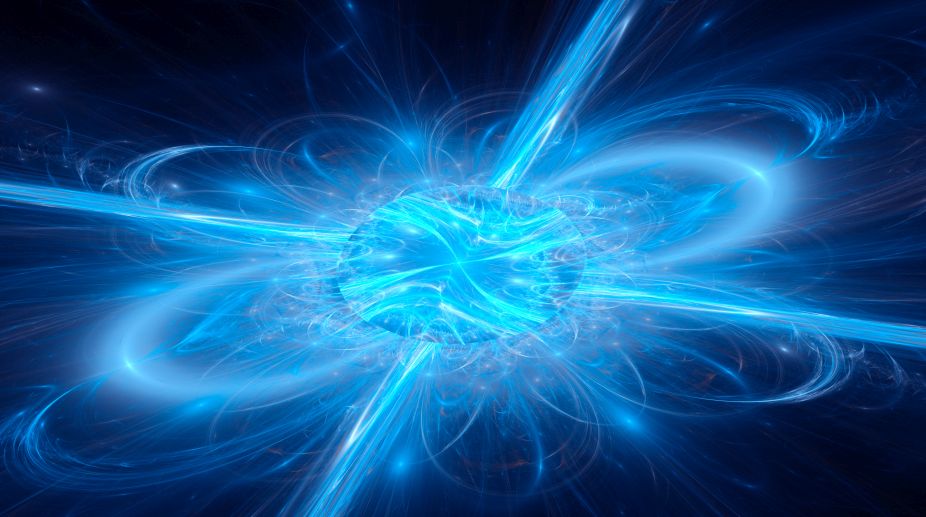Observing a curious neutron star in a binary system known as the 'Rapid Burster', scientists have found that its magnetic field could explain 40-year-old mystery surrounding its puzzling X-ray bursts.
Discovered in the 1970s, the Rapid Burster is a binary system comprising a low-mass star in its prime and a neutron star — the compact remnant of a massive star's demise.
Advertisement
The scientists discovered that its magnetic field creates a gap around the star, largely preventing it from feeding on matter from its stellar companion.
Gas builds up until, under certain conditions, it hits the neutron star all at once, producing intense flashes of X-rays.
The discovery, reported in the journal Monthly Notices of the Royal Astronomical Society: Letters, was made with space telescopes including European Space Agency's XMM-Newton and NASA's NuSTAR (Nuclear Spectroscopic Telescope Array) and Swift missions.
In a a binary system known as the 'Rapid Burster', the gravitational pull of the dense remnant strips the other star of some of its gas; the gas forms an accretion disc and spirals towards the neutron star.
As a result of this accretion process, most neutron star binaries continuously release large amounts of X-rays, which are punctuated by additional X-ray flashes every few hours or days.
Scientists can account for these 'type-I' bursts, in terms of nuclear reactions that are ignited in the inflowing gas — mainly hydrogen – when it accumulates on the neutron star's surface.
But the Rapid Burster is a peculiar source: at its brightest, it does emit these type-I flashes, while during periods of lower X-ray emission, it exhibits the much more elusive 'type-II' bursts – these are sudden, erratic and extremely intense releases of X-rays.
"The Rapid Burster is the archetypal system to investigate type-II bursts – it's where they were first observed and the only source that shows both type-I and type-II bursts," said lead author Jakob van den Eijnden from Anton Pannekoek Institute for Astronomy in Amsterdam, The Netherlands.
Despite 40 years of searches, type-II bursts have been detected only in one other source besides the Rapid Burster.
Known as the Bursting Pulsar and discovered in the 1990s, this binary system exhibits only type-II bursts.
Because of the scarcity of sources that display this phenomenon, the underlying physical mechanisms have long been debated, but the new study of the Rapid Burster could provide evidence for what is occurring.











